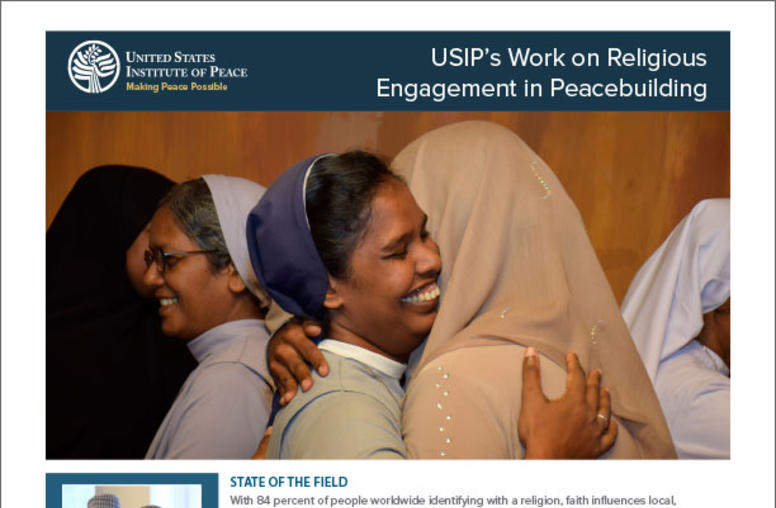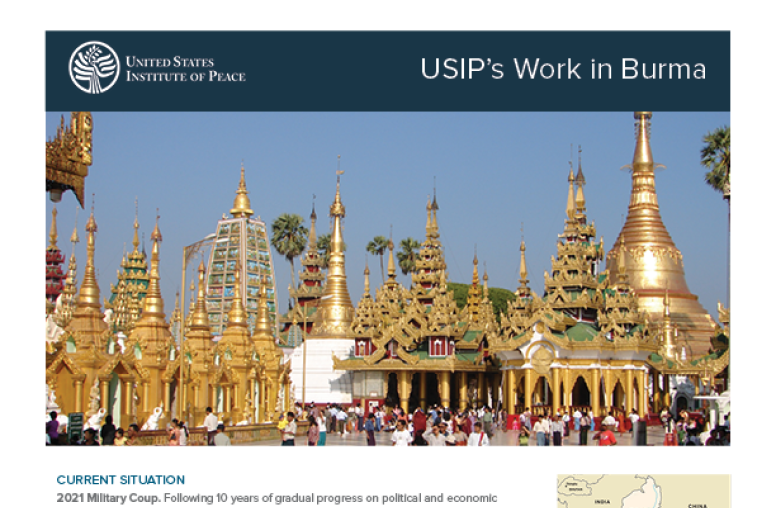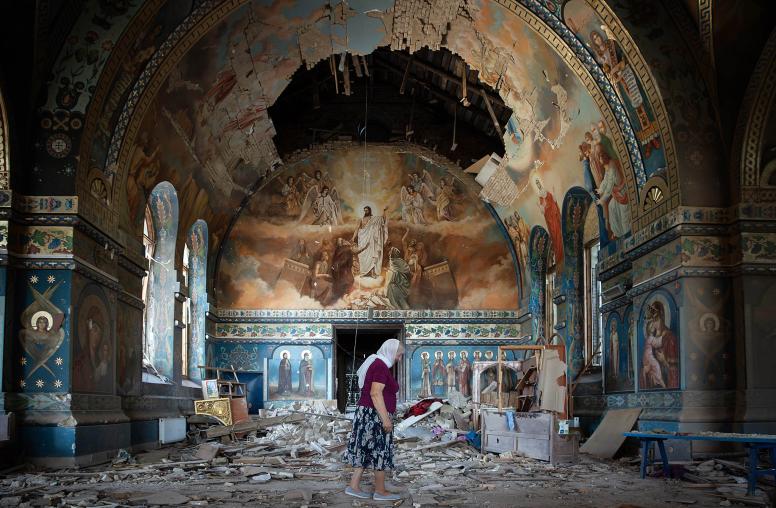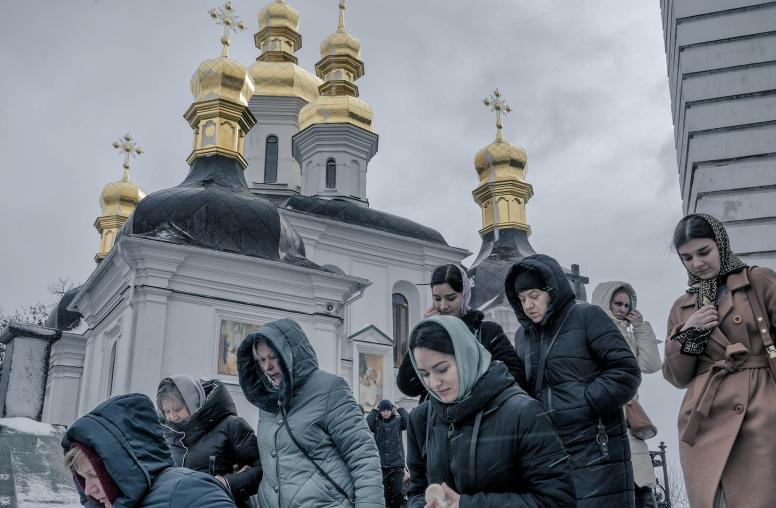Three Things You Thought You Knew About Freedom of Religion or Belief
An ever-growing amount of data on global religious restrictions challenges us to rethink best practices for promoting religious freedom.
Accounts of global religious restrictions and hostilities have, unfortunately, become a regular feature of today’s news cycle. India’s passage of the Citizenship Amendment Act, which uses religious identity as a criterion for citizenship, and its violent crackdown against protesters made headlines at the turn of year. The Chinese government’s detention of more than a million Uyghur Muslims, increased surveillance, and other religious regulations in Xinjiang continue to garner much attention. And, increasingly more concern has been given to the ongoing attacks on Christian communities in Nigeria. While these examples are, of course, worrying and must be addressed, a deeper dive into the data reveals that many of the assumptions we hold about the state of global religious freedom need further unpacking.

Next week Poland will convene the third Ministerial to Advance Freedom of Religion or Belief with such questions in mind. The virtual meeting will bring together government and civil society leaders from around the world with the goal of scaling up the international community’s efforts to protect and promote the right to freedom of religion or belief (FoRB). Informing much of that discussion will be the considerable amount of new data pointing to a steady decline in religious freedom around the globe, a pattern exacerbated further by the COVID-19 pandemic.
At USIP, we are also contributing to the conversation. As part of our “Closing the Gap” project, we recently compiled and analyzed a composite dataset consisting of diverse measures of religious freedom and relevant macrosocial factors for 176 states from 1990 to 2014. The former included three of the most prominent data sources on religious regulations and hostilities: the Pew Research Center’s Global Restrictions on Religion (Pew) data, the Religion and State (RAS) project, and the Varieties of Democracy (V-Dem) project. We were particularly interested in better understanding the relationship between religious freedom, political stability, and economic development.
Our findings both confirm and challenge conventional thinking, especially about the benefits of religious freedom. Most importantly, they underscore the need to consider the specific conditions under which FoRB impacts peace and development. The causes and consequences of religious restrictions are complex and may not operate the same in all environments.
Here are three things you may think you know about FoRB, but may be worth reevaluating.
1. FoRB is associated with democracy, but Western democracies do not necessarily have the highest levels of FoRB.
Today, the idea that FoRB and democracy go hand in hand is almost viewed as common sense. Our analysis generally confirms this relationship. We found a positive and significant correlation between religious freedom and a variety of democracy measures. Indeed, democracy stands out as the most consistent predictor of higher levels of FoRB in almost all of our models. Australia, Canada, Ireland, Mauritius, and New Zealand ranked particularly high. The story, however, does not end there.
While FoRB and democracy may frequently go together, they do not always do so—a point stressed in Dr. Jonathan Fox’s latest book on why governments discriminate against religious minorities. Drawing on his RAS dataset, Fox persuasively shows that democracies and even some non-democracies in Latin America, Asia, and sub-Saharan Africa engage in lower levels of religious regulation than many liberal Western democracies. Our analysis corroborates those findings.
Furthermore, FoRB and democracy do not always reinforce one another. Both the Pew and RAS datasets indicate that some of the largest increases in religious restrictions over the past half-decade have been in Western democracies, especially in Europe. France’s crackdown last month, including dozens of raids on Muslim aid groups, in the wake of a teacher beheading in a northern suburb of Paris and knife attack at a church in Nice suggest that this trend is not likely to wane, at least in the short term. Another reason for reservation is that rising religious restrictions in Europe are in line with other studies that note a worsening state of human rights in many democracies, even more so during the COVID-19 pandemic. In the end, democracy may contribute to, but does not necessarily guarantee, FoRB.
2. Religious restrictions can fuel conflict, and conflict can lead to religious repression.
Another oft-cited benefit of religious freedom is political stability and peace. The general idea is that religious discrimination, like other forms of state repression, can lead communities to take up arms in order to overcome their marginalization. This has been a concern raised, most recently, with respect to China’s crackdown against Uyghur Muslims, with many analysts warning that religious repression will eventually lead to a backlash in Xinjiang.
Our analysis supports this idea with two cautionary notes. One is that especially high levels of state repression often forestall armed rebellion. Take Vietnam, North Korea, Saudi Arabia, and Iran as examples. Each stands out as having some of the lowest levels of religious freedom in the world, but each also has a strong state apparatus that deters collective action and maintains stability, if not peace.
A second, equally important point, is that there is often a cycle of repression and violence. Repression can lead to conflict, but also conflict can lead to more religious regulation. For instance, intercommunal violence in Myanmar, especially between Buddhist and Rohingya communities, was followed by an uptick this past year in religious discrimination of Rohingya and other Muslims, Buddhists, Christians, and Hindus. In a similar pattern, Russia ramped up its regulation of faith communities once frontline rebel commanders in the North Caucasus began framing the conflict as a holy war and attracting an influx of foreign fighters. These examples also suggest that the type of conflict can matter. I have shown in other work with Dr. Peter Henne how religious rebellions, specifically, lead to more government regulation of faith communities.
3. FoRB does not guarantee economic growth.
A third purported benefit of religious freedom is economic growth, although it is often acknowledged that the link between the two is not necessarily direct. Rather, it is argued that religious restrictions and hostilities—and associated conflicts—can contribute to conditions that undercut growth, such as deterring investment or disrupting critical sectors of the economy. Much of the analysis backing these claims draws on the Pew data and focuses on conditions in a single year.
Our investigation does not yield similar support. Neither our time series nor our cross-sectional evaluation of specific years with other data sources—including a wide range of measures for economic development—offer robust evidence of a positive relationship between religious freedom and economic growth. If anything, we actually find a negative association between the two. This is perhaps less surprising when one considers that some of the sharpest declines in religious freedom in the past decade have been in upper middle- and high-income countries, including Western democracies as discussed above. It certainly calls for additional study.
In conclusion, our findings raise important questions about how to scale up the international community’s efforts to better protect and promote FoRB. Most importantly, they stress the need for more understanding of when and where FoRB is most likely to impact peace and development. There is no denying that millions around the world still face substantial constraints on their ability to adhere to and practice their faith in private or public or hold no faith at all. We hope our work will challenge policymakers and practitioners alike to take advantage of the full set of tools available for advancing FoRB.
Scott Bledsoe is a research assistant for the Religion and Inclusive Societies program at the U.S. Institute of Peace.



